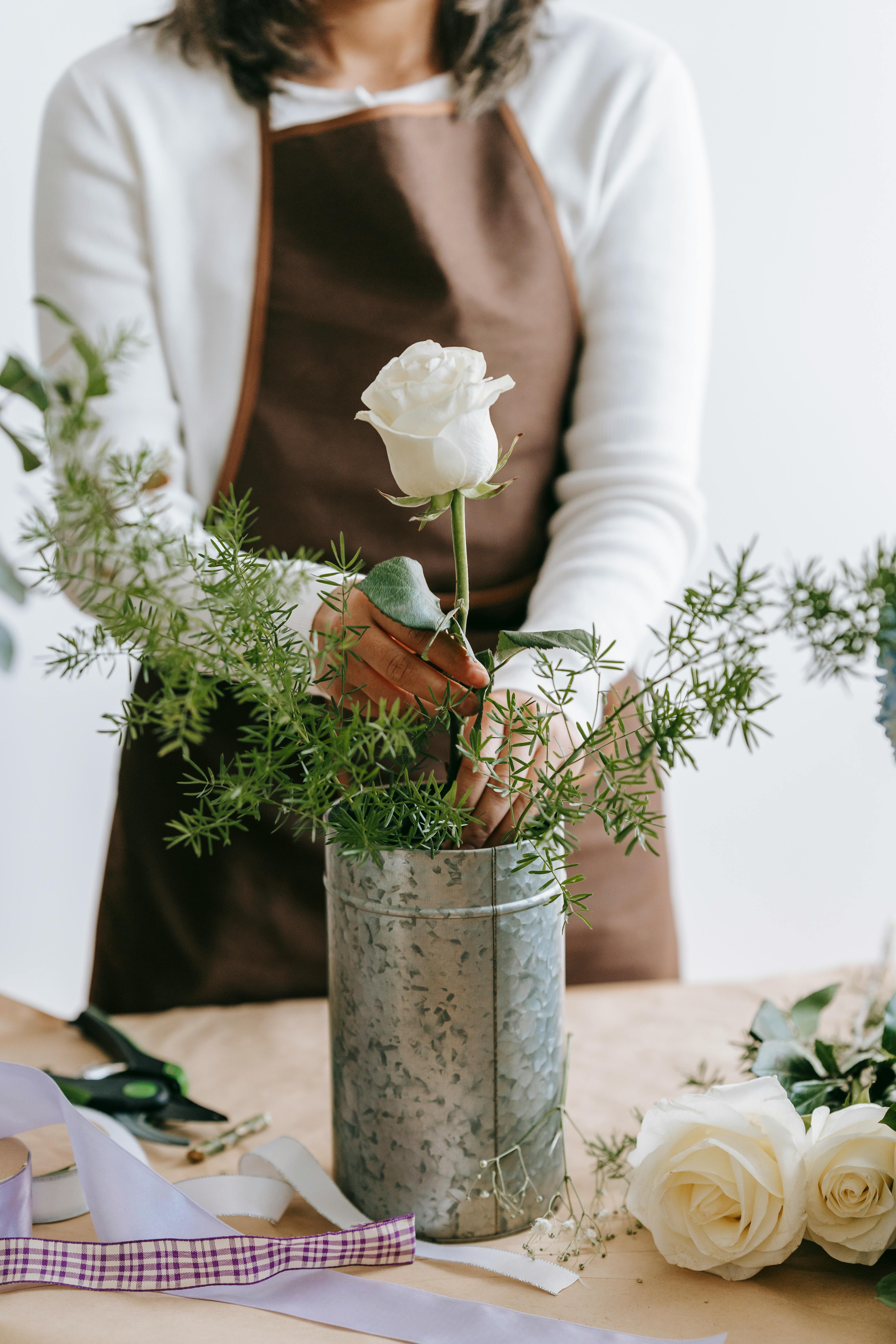Essential Guide to Caring for Mums in 2025
Mums, or chrysanthemums, are beloved flowers that bring vibrant colors and life to any garden or indoor space. As we step into 2025, understanding how to properly care for these charming plants is essential for gardeners of all levels. Mums are not only stunning but also symbolize joy and positivity, making them a perfect addition to any arrangement or landscape design. This guide will provide you with smart tips and tricks, from watering and sunlight requirements to pest control and seasonal care strategies, ensuring your mums thrive throughout the year.
In this article, we'll explore various aspects of mum care, including indoor and outdoor care techniques, fertilizing schedules, and common diseases to watch for. Whether you're a beginner looking to learn the basics or an experienced gardener seeking advanced techniques, you'll find valuable insight here. We’ll also cover innovative watering solutions and fertilizing techniques that contribute to healthy growth and abundant blooms. Keep reading for practical advice that you can implement to nurture your mums successfully!
Key Takeaways: Proper mum care involves optimal watering techniques, understanding pest management, knowing your mum's sunlight preferences, and seasonal maintenance tips. With attention to these details, your mums will flourish and add beauty to your environment.
Understanding Mum Plant Requirements: Soil and Sunlight
Every successful gardening venture begins with understanding the foundational needs of your plants. When it comes to mums, their soil and sunlight needs are paramount for robust growth. Mums prefer well-draining soil rich in organic matter, typically with a pH level between 6.0 and 7.0. To achieve this, you can amend your garden soil with compost or well-rotted manure, providing the essential nutrients for thriving mums.
Equally important is sunlight. Mums thrive in full sun, requiring at least 6 hours of direct light daily. Insufficient sunlight can lead to stretching issues and poor flowering. For urban gardeners or those with limited space, selecting the right location—whether it be a window sill or a balcony—ensures that your mums receive optimal light exposure. Make sure to monitor the light conditions throughout the day to guarantee healthy growth.
Essential Mum Soil Requirements
For mum care, selecting the right soil is crucial. Begin by testing your soil's pH and nutrients, as optimal levels encourage healthy root development. A suitable soil mix will help maintain moisture without becoming waterlogged. Adding peat moss can improve aeration and drainage, crucial for preventing root rot.
In addition, consider using a fertilizer designed for blooming plants to provide the right balance of nutrients. These fertilizers usually contain higher phosphorus levels, which promote blooming and enhance the overall health of the mum plants.
Sunlight Needs for Mums
Most mum varieties require full sun, which typically means at least 6 to 8 hours of sunlight per day. However, certain types can tolerate partial shade. If your location experiences extreme heat, providing some afternoon shade can prevent wilting and sunburn.
Understanding the specific needs of different mum varieties is crucial. Some may prefer filtered sunlight while others thrive in full exposure. Be sure to research your selected varieties to ensure they receive the most suitable lighting conditions.
Common Mistakes in Mum Sunlight Exposure
One of the most common mistakes made by gardeners is placing mums in too dark or shaded areas. This often results in weak growth and delayed blooming. Another frequent error is overexposing them to intense afternoon sunlight without adequate watering, leading to stress and wilting. Referencing your local climate conditions can also help you optimize exposure timing throughout the changing seasons.
This information is instrumental as we transition toward watering practices, which is essential for maintaining mum health.
Mastering Watering Techniques for Mums
Watering is a critical component of effective mum care. Understanding your mum's water needs ensures vibrant blooms and strong growth. Mums require regular watering, especially during the hot months when the moisture in the soil can deplete quickly. It’s essential to establish a watering frequency based on environmental conditions, which can vary seasonally.
The key to successful mum watering lies in consistency. Checking soil moisture regularly is the best way to determine when to water. Aim to keep the soil consistently moist but not soggy, as overwatering can lead to root rot and other diseases.

Optimal Mum Watering Frequency
Your watering frequency should vary based on the season and climate. In the spring and summer, when growth is vigorous, watering once or twice a week may be necessary. In contrast, during fall or winter, when mums are dormant, reduce the frequency to once every two weeks. It’s vital to adjust your watering technique based on the growth stage of the mum, especially as it approaches blooming season.
Innovative Watering Solutions
To ensure your mums are consistently hydrated, consider utilizing self-watering pots or drip irrigation systems. These methods can help regulate moisture levels effectively, allowing for consistent watering schedules even with varying environmental conditions.
Additionally, mulching around your mums can help retain moisture, regulate soil temperature, and suppress weed growth, allowing your plants to thrive with less frequent watering.
Preventing Common Watering Mistakes
Many gardeners struggle with the challenges of watering, leading to inconsistent growth. Common mistakes include ignoring soil moisture levels or overwatering, both of which can promote diseases like root rot. Developing a keen sense of your plants' needs and keeping a watering schedule can mitigate these issues significantly.
Now that we have discussed watering, let’s delve into fertilizing techniques to enhance mum vitality.
Fertilizing Mums for Optimal Growth
Proper fertilization is vital for enhancing the vitality and blooming capabilities of your mums. Choosing the right fertilizer and developing a fertilizing schedule tailored to your mum plants can make all the difference in their health and appearance. Mums require specific nutrients at various growth stages, leading to a need for balanced fertilization.

Best Fertilization Schedule for Mums
The fertilization frequency for mums varies depending on their growth stage. During the early growing season, use a balanced, slow-release fertilizer. Once blooming starts, switch to a bloom-boosting fertilizer to enhance flower production. Following the directions for dosage will help ensure that your plants receive adequate nutrition without over-fertilizing, which can lead to excessive leaf growth and fewer blooms.
Fertilizing Techniques for Mums
When applying fertilizer, consider using granular formulations in the spring. These release nutrients slowly over time, providing a consistent supply that aligns with the plant's growing cycle. For quick nutrient availability, liquid fertilizers can be applied during the growing season, especially when additional support is required.
Common Fertilizing Mistakes
Over-fertilization is a common pitfall for new gardeners. Too many nutrients can burn wet foliage or create weak, leggy plants with few blooms. Always follow the recommendations on your fertilizer packaging, and opt for a soil test to understand the nutrient requirements of your specific soil mix.
Thriving Mums: Pest Control and Disease Prevention Techniques
Effective pest control and disease management are essential aspects of mum maintenance. Understanding common pests and diseases that affect mums will empower you to take proactive measures to keep your plants healthy.
Some of the most common pests include aphids, spider mites, and whiteflies. Regularly inspect your plants and treat any infestation promptly. Home remedies such as neem oil or insecticidal soap can effectively combat these pests without harming beneficial insects.
Pest Management for Mums
Utilizing preventative measures can help maintain healthy mums. Techniques such as companion planting and maintaining optimal cultural practices (like proper spacing for air circulation) can minimize pest problems significantly. Keeping an eye on your plant's health can create a thriving environment less conducive to pest infestations.
Identifying Common Mum Diseases
Fungal diseases, such as powdery mildew and rust, can affect mums during humid periods. Paying attention to leaf color and texture helps in diagnosing issues early. Promptly remove affected leaves to prevent the spread of disease and ensure continued plant vitality. Knowing the specific symptoms associated with each disease can streamline treatment and promote faster recovery.
Implementing Disease Prevention Strategies
Practicing proper seasonal care, understanding mum varieties, and ensuring adequate air circulation can vastly improve disease resistance. Rotating the placement of your mum pots each season can also mitigate soil-borne diseases and enhance their growth and health.
Winter Protection and Seasonal Care for Mums
As cooler months approach, it's important to provide your mums with the winter protection necessary for their survival. Depending on your climate, some varieties may thrive outdoors while others will require special attention indoors.
Outdoor mums can benefit from mulching to insulate roots against freezing temperatures. For potted mums, either bring them indoors or cover them with burlap and mulch to protect the roots from extreme cold and frost.
Indoor mums should be kept in a warm location with consistent light exposure, avoiding drafty spots that may stress the plants. Regular monitoring of moisture levels is necessary to prevent drying out during the winter months.
Essential Winter Care Techniques for Mums
These techniques can ensure your mums survive the winter months. For outdoor plants, consider pruning dead or weak foliage before the first frost to promote healthier growth in the spring. For indoor care, adjust your watering schedule to prevent overwatering during dormancy, allowing the soil to dry out slightly between waterings.
Monitoring Seasonal Health of Mums
Watching for changes in leaf color or structure will help determine if your mums are stressed or unhealthy. Addressing these concerns proactively will minimize long-term damage and guarantee proper blooming in the future.
Frequently Asked Questions About Mum Care
What are the best varieties of mums for beginners?
For beginners, consider popular varieties like garden mums and hardy chrysanthemums, as they tend to be more forgiving and easier to grow.
How often should I water my mums?
Monitor your soil moisture and aim to water consistently, usually about once a week or more frequently during dry spells.
What should I do if I see pests on my mum plants?
If you observe pests, treat them with neem oil or insecticidal soap, taking care to apply thoroughly on affected areas.
How can I maximize blooming in my mums?
Ensure they receive adequate sunlight, maintain a consistent moisture level, and use a bloom-focused fertilizer during the blooming period.
Can I grow mums indoors?
Yes, mums can be grown indoors! They require bright, indirect sunlight and need to be watered regularly to thrive.
Conclusion: Best Practices for Healthy Mums
Caring for mums involves understanding their specific requirements for soil, water, light, and pest control. By adhering to the best practices outlined in this guide, gardeners can cultivate a beautiful array of mums—whether in outdoor gardens or indoor pots—making their environments more vibrant. Additionally, continuous learning and adapting to each mum variety's unique needs will help ensure abundant blooms and healthy plants year after year.
Incorporating these intelligent gardening practices into your routine will not only enhance your mum gardening skills, but will also allow you to enjoy their beauty during the blooming season and beyond. Happy gardening!
